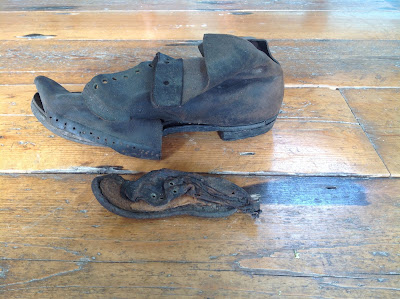The colour green
We recently posted a picture of the front door of the Centre on our Facebook page. It got some of us wondering about the significance of the colour green. We've heard it said anecdotally that the colour had a specific association with the building. We've tried to find out more about this but nothing has popped up so far.
 |
| The front door at the Irish Workhouse Centre, Portumna |
Some of the staff here know that the colour was a popular one in the Victorian period. This seems to be particularly true in relation to clothing and soft furnishings. In the early 1800s, a German company began producing a new hue, the 'Schweinfurt green', named after where it was produced. It became so popular that soon carpets and wallpapers were reproduced in the same green colour, alongside the fashionable dresses of the time. One of the key ingredients in the vibrant emerald green was arsenic, so perhaps this is where some of the distaste for the colour comes from.
In much of the Schools' Folklore Collection superstition in relation to the colour green comes from its association with the fairies, magic and bad luck. References from Co. Leitrim tell the story of a 'green wizard', a 'green road' in Mountmellick, Co. Laois was said to be haunted by 'the sounds of horses galloping and chains rattling', and a 'green lady', the wife of a soldier living in Ballyshannon, Co Donegal who always wore green and 'everyone said that colour was unlucky to wear'. An interesting saying from Callan, Co. Kilkenny, says that 'a green Christmas makes a fat Churchyard', that unseasonable weather is unhealthy.
We'd be delighted to hear from anyone who knows about our green door. In the meantime, we will continue our research and give an update on anything new we find.


Comments
Post a Comment